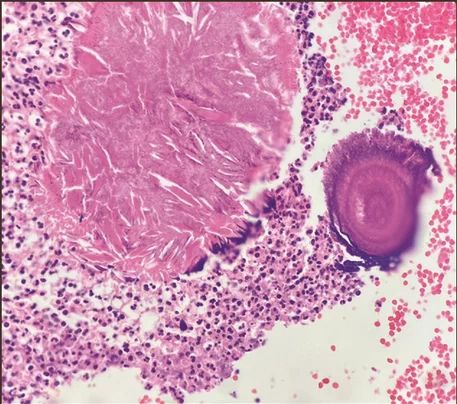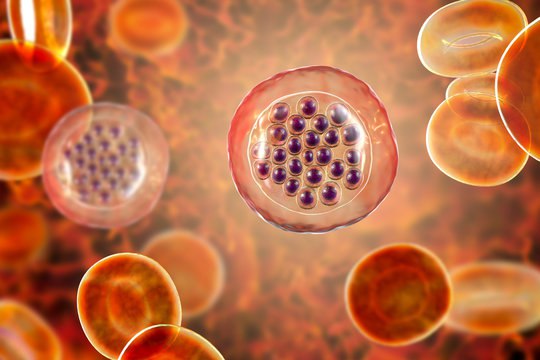
Clinical Manifestations of Actinomycosis
Actinomycosis results from pathogen introduction following
a breakdown in mucocutaneous protective barriers. Spread within the host is by
direct invasion of adjacent tissues, typically forming sinus tracts that cross tissue planes.
The most common species causing human disease is Actinomyces israelii.
There are 3 common anatomic sites of infection. Cervicofacial is most common,
often occurring after tooth extraction, oral surgery, or other oral/facial trauma
or even from carious teeth. Localized pain and induration may progress to cervical
abscess and “woody hard” nodular lesions (“lumpy jaw”), which can develop draining
sinus tracts, usually at the angle of the jaw or in the submandibular region. Infection
may contribute to recurrent or persistent tonsillitis. Thoracic disease most commonly
is secondary to aspiration of oropharyngeal secretions but can be an extension of cervicofacial
infection. It occurs rarely after esophageal disruption secondary to surgery
or nonpenetrating trauma. Thoracic presentation includes pneumonia, which can be
complicated by abscesses, empyema, and rarely, pleurodermal sinuses. Focal or multifocal
mediastinal and pulmonary masses may be mistaken for tumors. Abdominal
actinomycosis usually is attributable to penetrating trauma or intestinal perforation.
The appendix and cecum are the most common sites; signs and symptoms can mimic
appendicitis. Slowly developing masses may simulate abdominal or retroperitoneal
neoplasms. Intra-abdominal abscesses and peritoneal-dermal draining sinuses occur
eventually. Chronic localized disease often forms draining sinus tracts with purulent
discharge. Other sites of infection include the liver, pelvis (in some cases, linked to
use of intrauterine devices), heart, testicles, and brain (usually associated with a primary
pulmonary focus). Noninvasive primary cutaneous actinomycosis has occurred.
Actinomyces infections have been associated with adverse pregnancy outcomes and cases
of neonatal bacteremia have been described.


